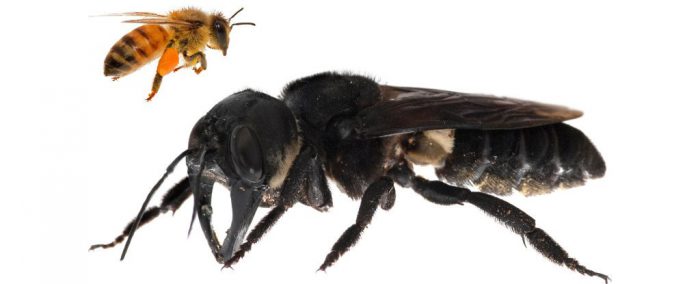It's no secret that plenty of people have a fear of bees. For those who are allergic, this obviously comes with reasons that no one needs to justify.
But for the rest of us, we've always taken the view that bees might be over-feared and under-appreciated. As pollinators alone, bees are responsible for so much good in our ecosystems, that we'd be lost without them. Can't we give bees some love?
Of course, that was before we saw Wallace's giant bee.

Psst...it's the big one. (Clay Holt)
Okaaaay. We're sorry, would you excuse us a moment?
AAAAAAGGGGGHHHH!
Sorry, that totally went against our previously-stated pro-bee stance. It's just, like... did you see that thing?
(Slowly regaining our composure over here...)
Objectively speaking, this is a wonderful day for science. As it turns out, Wallace's giant bee has been 'missing' since 1981. No, now that you mention it, we're not sure how anything that large went missing either. But it might have something to do with the fact that the bee lives in a remote part of Indonesia. And that it lives deep inside of termite mounds. Like these...
Embed from Getty Images
Termite mounds at the base of a large tree in an Indonesia rainforest, a.k.a. Wallace's giant bee HQ! (Getty Embed)
So in the end, it's not so much that Wallace's giant bee was extinct, it's just that it was well hidden. This rediscovery is a big reminder of just how many creatures there are on this planet that we have no real clue about at all. The hope of environmental groups like Global Wildlife Conservation (who funded the expedition to find this bee) is that rediscovering these creatures will bring attention to the true biodiversity of our planet.
Because, truthfully—who would want to live in a world without Wallace's giant bee?
Maybe, don't answer that.
 Meet the world's largest bee, looking only slightly less scary inside a sealed tube. (Clay Holt)
Meet the world's largest bee, looking only slightly less scary inside a sealed tube. (Clay Holt)









